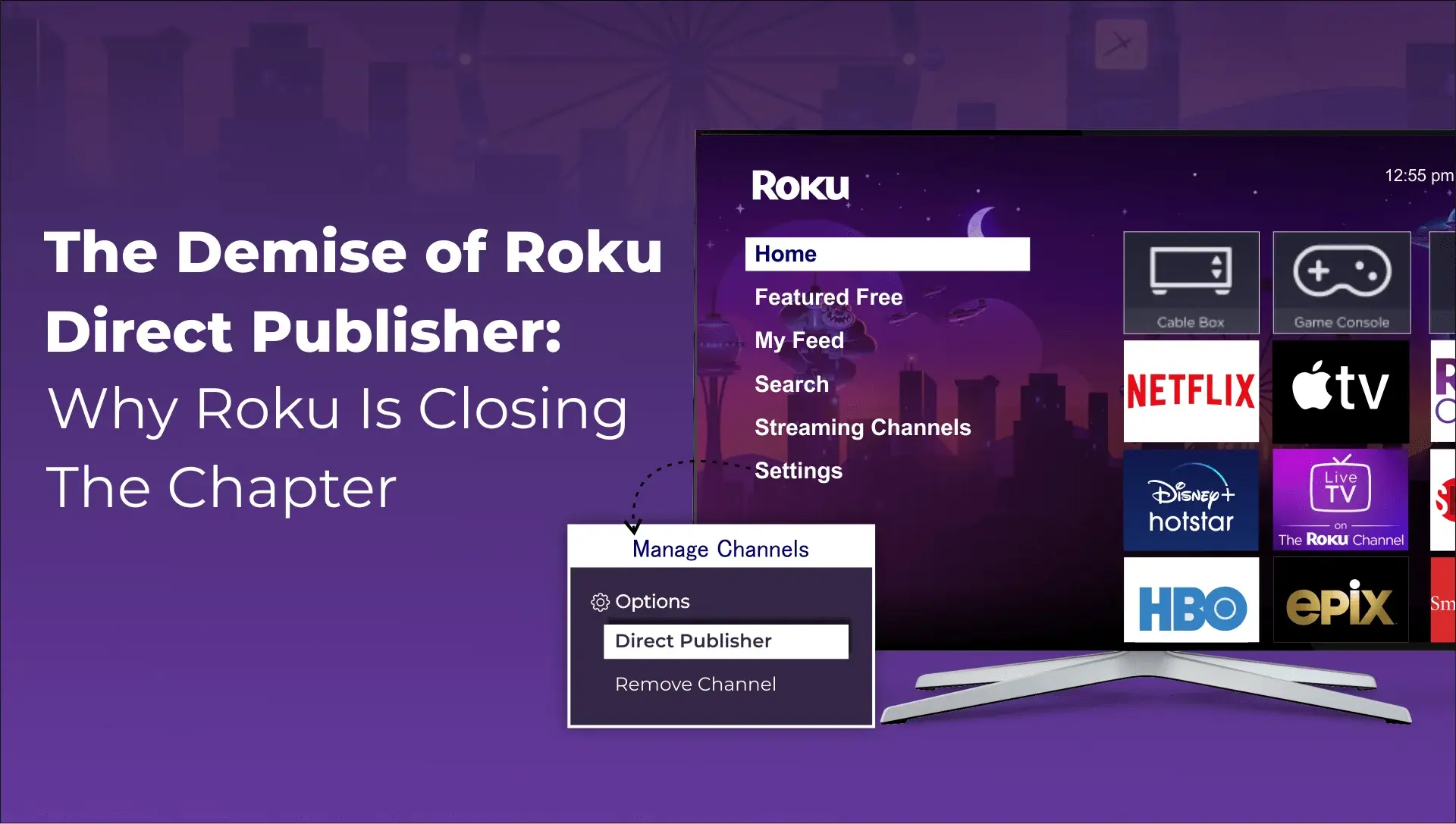The Demise of Roku Direct Publisher: Unveiling the Closure
Explore the reasons behind Roku's closure of the Direct Publisher platform. Gain insights into the transition and its impact on content creators.

In the world of streaming, Roku has long been a well-known brand because to its easy-to-use equipment and large selection of channels. Many people are perplexed by the recent reports that Roku would no longer offer its Roku Direct Publisher. The purpose of this essay is to explain what Roku Direct Publisher is, why it was important, and why Roku Direct Publisher decided to shut it down.
Table of Contents
ToggleWhat is Roku Direct Publisher?
A free platform called Roku Direct Publisher was introduced in 2017 with the goal of enabling content producers and publishers to quickly build and share their streaming channels on Roku devices. It sought to democratise the streaming sector by doing away with the requirement for in-depth technical expertise or coding abilities. Over time, this approachable platform developed, opening it up to a variety of content producers, including independent films, bloggers, churches, and small companies. The main goal of Roku Direct Publisher was to provide a straightforward method for producers to connect with Roku’s enormous customer base.
Significance of Roku Direct Publisher
- Accessibility for Content Creators : The Roku Direct Publisher was instrumental in decreasing the entry requirements for the streaming industry. It gave independent content producers and smaller businesses the chance to reach a large audience without having to make major distribution and development costs. Due to the democratisation of streaming, niche content flourished, enhancing the selection of content available on Roku’s channel shop.
- Diverse Content Creation: One of the most significant contributions of Roku Direct Publisher was its ability to facilitate the creation of diverse channels. It allowed content creators to explore a wide range of topics, from fitness and cooking to religion and local news. This diversity enriched the Roku channel library, ensuring that users had access to a plethora of options catering to their interests.
- Monetization Opportunities: By using advertising or subscription-based business models, Roku Direct Publisher allowed producers of content to make money from their own channels. Roku and content creators both benefited from this because it not only encouraged the creation of new content but also brought in money for the creators.
- Enhanced User Engagement: Roku Direct Publisher channels were easily incorporated into the Roku ecosystem, giving viewers a consistent watching experience. Both the artists and Roku profited from the increased user engagement and enhanced user retention rates brought forth by this connection.
Reasons Behind Roku’s Decision to Close Roku Direct Publisher
- Evolution of Roku’s Ecosystem: Roku has evolved into a streaming giant, with a primary focus on enhancing user experience and offering premium content. To align with this evolving ecosystem, Roku decided to shift its emphasis towards partnerships with established studios and networks, rather than supporting a vast array of small-scale content creators.
- Quality Control Concerns: An abundance of spammy and low-quality channels have proliferated as a result of Roku Direct Publisher’s open-door approach. Roku made it a goal to uphold a higher standard for the material that is made available on its platform in order to guarantee a fantastic user experience.
- Ad Revenue Challenges: Roku’s focus on maximizing ad income from its platform became clear as it grew. Smaller channels produced by Roku Direct Publisher might not have brought in enough advertising income, which would have made them less profitable for Roku.
- Increased Competition in the Streaming Industry: Due to the dominance of large firms like Netflix, Amazon Prime, and Disney+, the streaming business has grown more competitive. Roku needed to commit more funds if it wanted to effectively compete with these industry heavyweights.
- Emphasis on Channel Curation: Roku came to the conclusion that algorithms for channel curation and content recommendation would suit user preferences and engagement more effectively. Compared to a more curated approach, relying on numerous channels that were all individually established became less enticing.
- Platform Consolidation: Roku may be streamlining its platform to offer a more unified and consistent experience for its users. This could involve consolidating channels and content sources to enhance the overall user experience.
Conclusion
Roku Direct Publisher played a pivotal role in democratizing the streaming industry, allowing a diverse range of content creators to showcase their work to a global audience. The decision to stop this chapter, however, seems to have been made by Roku due to its changing business strategy, the need to uphold content quality, the shifting streaming market, and a desire to streamline the platform for a better user experience. While the closure of Roku Direct Publisher may disappoint some content creators, Roku’s commitment to delivering a superior streaming experience for its users remains unwavering. As the streaming landscape continues to evolve, Roku will undoubtedly adapt to stay at the forefront of the industry.